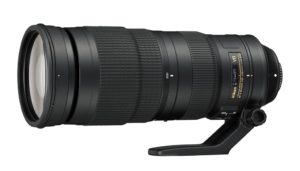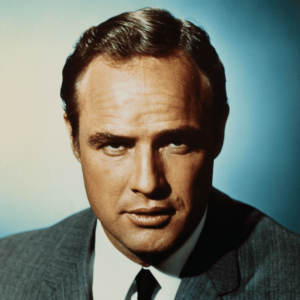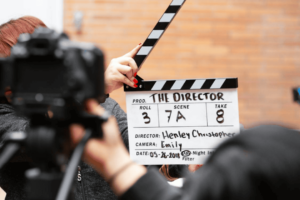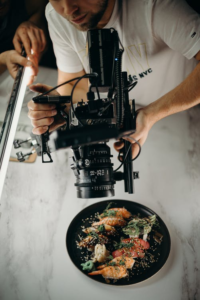A sound designer, also called an SDx or a supervising sound editor, develops the sonic world for film, television, and theater projects. They create or source everything the audience hears. This includes the soundtrack, sound effects, and atmospheric sounds.
The work of sound designers makes projects seem more authentic. It also ensures audiences respond emotionally to what they see. The job of a sound designer includes a variety of duties, such as:
- Reading scripts to familiarize themselves with sound requirements
- Discussing sound design concept and requirements with director, editor, and production sound mixer
- Attending rehearsals and filming, as required
- Creating a sound cue list highlighting spot effects, atmosphere effects, and sound design effects
- Selecting music if the director doesn’t have their own ideas or production has no composer
- Sourcing sound effects from sound archives and libraries
- Setting up sound reinforcement and playback equipment, including microphones
- Capturing sounds live, including collaborating with composers and musicians
- Recording sounds in a studio
- Editing, manipulating, and remixing sounds
- Training soundboard operators
- Supervising sound post-production processes to make sure they are on schedule and on budget
Key Collaborators of a Sound Designer
Sound designers rely on several other sound professionals when performing their duties. Common collaborators include:
- Sound supervisors
- Sound engineers
- Sound technicians
- Foley artists
- Sound editors
- ADR editors
- Audio editors
- Audio recording engineers
- Composers
- Music supervisors
- Sound effects designers
- Technical sound designers
- Musicologists
Note that on some projects, sound designers may assume the duties normally associated with some of these roles.
The History of Sound Design
The professional role of the sound designer has only been around for roughly 50 years. Francis Ford Coppola used the title first to recognize Walter Murch’s work on “Apocalypse Now.” However, the history of sound design is much more exhaustive. Early historical records show that sound design began in the theater. In the early days, live musicians and props created all sounds.
The rise of recording and playback technology increased the possibility for sound designers. Suddenly they could create layered, multi-part soundscapes. Opportunities for sound designers also increased with the rise of film and television.
These new mediums have also influenced the way sound designers work. Once, theater used very long acts in single locations. However, now theater productions use shorter scenes in several locations, as films and TV shows do. Directors rely on sound designers to set the various scenes. Music or sounds underscoring the action have also become more common in the theater, as they are in film and TV.
Skills of Successful Sound Designers
Sound designers use a variety of technical and soft skills in their careers. The skills they rely on include:
- Comprehensive knowledge of sound equipment and recording processes
- Confidence using sound editing and audio manipulation technology, including Pro Tools, Logic, GarageBand, QLab, and various audio plug-ins
- An excellent ear and understanding of sound properties including timbre, rhythm, melody, harmony, balance, and musical structure
- Comprehensive knowledge of sound principles, including acoustics and psychoacoustics
- Comprehensive knowledge of music history and its genres
- Verbal communication skills to determine a project’s requirements and convey them to composers, musicians, and other sound professionals
- Organization and understanding of how to prioritize tasks
Qualities of Successful Sound Designers
Successful sound designers often share common personality traits. Most successful sound designers are:
- Creative: Creativity helps sound designers imagine how to create sound effects.
- Passion for sound: This quality encourages sound designers to learn about new sound technology and best design practices.
- Interest in stories: Sound is more than merely aural entertainment. The most successful sound designers understand this and want to tell stories through their medium.
- Personable: A pleasant personality helps sound designers collaborate and network with other film professionals.
- Collaborative: Sound designers typically work with other sound professionals, directors, editors, and production mixers.
The Business of Being a Sound Designer
Some sound designers have full-time regular employment. However, most are self-employed professionals working on short-term contracts. Jobs are rarely advertised, so sound designers rely on their relationships with directors and studios. Directors and producers usually approach sound designers directly when they have work available.
The work of sound designers begins during pre-production and usually does not end until the end of post-production. Theater sound designers usually work until a show begins. However, they may return if their production goes on tour or makes cast changes. Some sound designers may have a very brief role in a project, working on just a single type of effect.
How Much Does a Sound Designer Make?
Earnings vary, with sound designers negotiating fees on a project-by-project basis. However, the average salary is $40,800 per year. The typical annual salary ranges from $25,000 to $68,000. Joining a union helps sound designers increase their salaries.
Unions, Groups, and Organizations
The IATSE Labor Union works on behalf of sound designers. As well as campaigning for fair wages, they have excellent resources for members.
The Association of Sound Designers is another excellent resource for sound designers. Their seminar archives contain information about various aspects of sound design.
Lynda.com and YouTube also have excellent video tutorials for sound designers. Professionals can also connect via Facebook industry groups such as Sound Design and Sound Design Only.
What Is a Sound Designer’s Lifestyle Like?
Sound designers work in fast-paced environments with strict deadlines. They must be willing to work long hours, seven days a week, to deliver sound recordings on schedule. Some sound designers work on several projects at once. This can make balancing work with a personal life difficult. However, freelance sound designers may also face long periods of downtime between projects.
Tips for Becoming a Sound Designer and Advancing in This Role
There are several ways to become a sound designer. Following these tips will help you secure one of these coveted roles:
- Get formal training in sound design. If you have a particular area of interest, such as sound design in film, apply for courses focused on this niche. These courses teach students about sound technology, sound theory, and sound production processes. Many sound designers do not have formal training, but those that do set themselves apart.
- Get an internship. Some major studios offer internships that give participants practical experience and networking opportunities.
- Start small. Sound designers often start out as runners in sound cutting rooms or audio post-production facilities. Many then become assistant re-recording mixers, production sound mixers, or sound editors. Most people work in these roles for several years before becoming sound designers.
- Expand your horizons and skills. Even unrelated roles, such as theater electrician or stage manager, can teach you about the industry and the role sound design plays. A fine arts or composing background can also give sound designers a unique perspective. Learning new skills in filmmaking, live audio production, and other areas of interest will also serve you well.
- Volunteer in your community. Community and school productions with limited budgets often use aspiring sound designers. Use these opportunities to network and try new things. They can really boost your resume when you’re applying for paid sound design work.
- Experiment at home. Many sound designers spend years recording and experimenting with sounds before entering the industry. Many even create their own sound libraries. This unpaid experience helps sound designers unlock their creativity and improve their skills.
- Listen as often as you can. Pay attention to music recordings, film scores, and the sounds you hear all around you. They all have something to teach you.
- Be patient. Securing gainful employment as a sound designer often takes time. Do not rush the process. Instead, focus on all you’re learning along the way.
Working as a sound designer is an exciting career for anyone interested in the world of audio. If you’re interested in becoming a sound designer, you can learn more about film and how you can improve your skills by applying to the Nashville Film Institute here.











